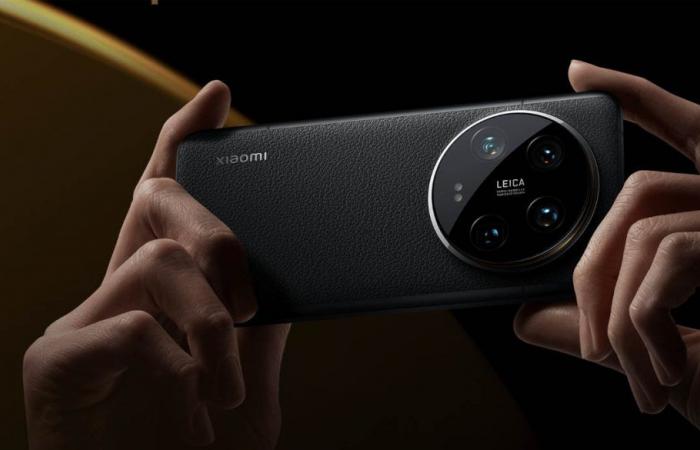The designs of the selected Xiaomi smartphones each have distinct characteristics. Thus, the Xiaomi Redmi Note 13 Pro 5G offers flat profiles with photo sensors organized on a plate on the back, matching the general color of the device, available in black, purple and blue. The Xiaomi 14 Ultra, on the other hand, stands out with its curved edges on all four sides and its photo sensors integrated into a large textured circle on the back, available in black or white. Finally, the POCO F6 Pro, with a metal frame, has photo sensors on a plate almost as wide as the phone, on the back, designed not to leave fingerprints. The profiles of the three models vary, with the POCO and Redmi Note adopting a flat design while the Xiaomi 14 Ultra stands out with its slightly curved design.
The Redmi Note 13 Pro 5G is the lightest, while the Xiaomi 14 Ultra is the largest in terms of dimensions and weight.
Battery capacities also vary: the Xiaomi Redmi Note 13 Pro 5G has a 5100 mAh battery with 67 watts fast charging, but without wireless charging. The Xiaomi 14 Ultra offers a 5300 mAh battery with 90 watts fast charging, 80 watts wireless charging and 10 watts reverse charging, which positions it as the model with the best battery life and charging flexibility. The POCO F6 Pro, with its 5,000 mAh battery, supports an impressive 120 watts of fast charging, but does not offer wireless charging. So, for prolonged use and fast charging, the Xiaomi 14 Ultra is best equipped, closely followed by the POCO F6 Pro.
Which is the most powerful and which is the best screen?
Smartphone performance is also a crucial criterion. The Xiaomi 14 Ultra, equipped with the Qualcomm Snapdragon 8 Gen 3 with 16 GB of RAM, is the most powerful. It is followed by the POCO F6 Pro with Snapdragon 8 Gen 2 and 12 or 16 GB of RAM. The Redmi Note 13 Pro 5G, although efficient with a Snapdragon 7s Gen 2 and 8 or 12 GB of RAM, is the least powerful. None of the models allow storage expansion via micro SD.
Regarding the screens, the Xiaomi 14 Ultra has a 6.73-inch AMOLED panel, curved on four sides, with a maximum brightness of 3000 cd/m² and a resolution of 1440×3200 pixels. The POCO F6 Pro and Redmi Note 13 Pro 5G both offer 6.67-inch AMOLED screens, which are flat, but with peak brightness of 1200 and 1800 cd/m² respectively. All three offer a refresh rate of 120 Hz. Therefore, the Xiaomi 14 Ultra has the most advanced screen, in terms of size, brightness and display quality.
What configurations for photos and what connectivity?
For photography, the Xiaomi 14 Ultra clearly stands out with four sensors of 50 megapixels each, including an optically stabilized main sensor, an ultra wide-angle, and two telephoto lenses for an optical zoom of up to 5x. It is optimized by Leica for superior quality shots. The POCO F6 Pro offers a 50-megapixel optically stabilized main sensor, an 8-megapixel ultra-wide-angle sensor, and a 2-megapixel macro sensor. The Redmi Note 13 Pro 5G features an impressive 200-megapixel optically stabilized main sensor, complemented by an 8-megapixel ultra-wide-angle and a 2-megapixel macro module. The selfie sensor is 32 megapixels for the Xiaomi 14 Ultra, compared to 16 megapixels for the other two. In terms of overall photo quality, the Xiaomi 14 Ultra comes out on top.
In terms of connectivity, the Xiaomi 14 Ultra supports Wi-Fi 6E with the possibility of upgrading to Wi-Fi 7, the POCO F6 Pro also offers Wi-Fi 7 and the Redmi Note 13 Pro 5G offers Wi-Fi 6. All the models have NFC technology and Bluetooth (5.4 for the Xiaomi 14 Ultra, 5.3 for the POCO F6 Pro, and 5.2 for the Redmi Note 13 Pro 5G). Only the Redmi Note 13 Pro 5G retains a jack socket. The three models are certified waterproof: IP68 for the Xiaomi 14 Ultra, and IP54 for the other two, so they can only withstand splashes but nothing more. All have an infrared emitter and a fingerprint reader under the screen, which is practical.






